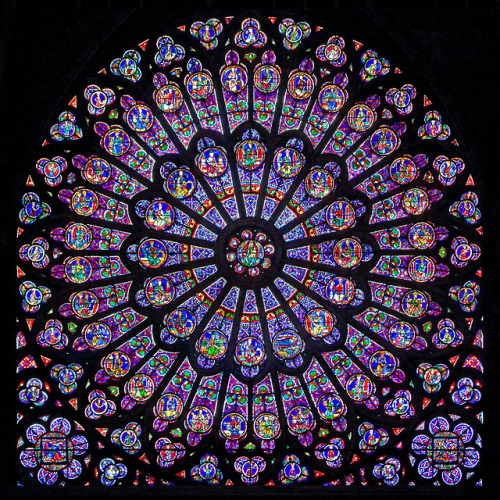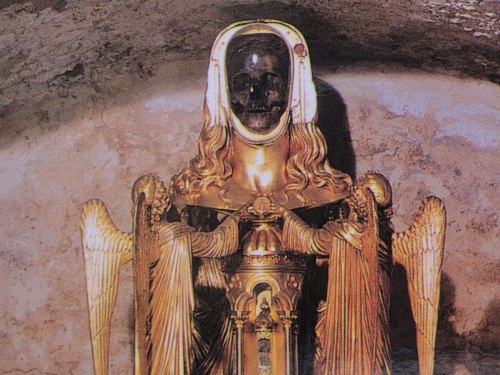BECKET (1964) // LAWRENCE OF ARABIA (1962)






BECKET (1964) // LAWRENCE OF ARABIA (1962)
More Posts from Temple-of-bullets and Others
hi could u explain the etymology behind arabic geographical terms (magrheb, sham, sudan)
hi, sorry for the late reply.
al- maghreb ( المغرب ) means where the sun sets. Morocco was the furthest point where Arabs could see the sunset so this is why morocco is named Maghreb in Arabic. But, in english and also in Arabic ( al-maghreb al- arabi), it means the north african region ( Libya, Tunisia, Algeria, Morocco and Mauritania). We can also say al- Machraq ( المشرق) al-arabi as opposed to al- mghreb, and it refers to the middle eastern region.
Shem / Sham ( شام) is derived from the name Sem, one of the three sons of Noah ( the believed father of semitic people). it is said that he used to live there, in the laventine. the name was altered from Sem to Shem through the years.
Sudan ( سودان ) has a persian and Arabic origin. it means black people in both languages.
Can you tell me more about fabric flower hair pins used in hanfu? I saw a lot of Japanese-style kanzashi in “The Empress of China”, but I couldn’t find any info of that sort of hair ornament used in Chinese history.
Hi, thanks for the question!

Yep, you’re right - the Cdrama “The Empress of China” sometimes uses Japanese-style fabric flower hairpins (see example below) that are culturally and historically inaccurate (then again, Chinese costume dramas are notorious for being loose with sartorial historical accuracy…):

So let’s now take a look at actual Chinese fabric flower hairpins:

The umbrella term for Chinese flower hair ornaments is Zan Hua/簪花 (lit. “flower hairpins”), which includes fresh flowers as well as artificial ones made from fabric, paper (Zhi Hua/纸花), beads (Zhu Hua/珠花), etc.
Traditional Chinese fabric flower hairpins used with Hanfu include (but are not limited to!):
1) Juan Hua/绢花: “Silk flowers” - flower imitations made from silk fabrics of various colors. Dates back to more than 1,700 years ago, and was the main ornament for women during the Tang Dynasty. In 2008, Beijing Juanhua was officially designated as an intangible cultural heritage of China.


2) Chan Hua/缠花: “Wrapped flowers” - using colorful silk threads to wind flower art onto fixed frames. The technique of wrapping flowers originated during the Ming dynasty and flourished in the Qing dynasty. Notable for being small, delicate, and lifelike. Has been designated as an intangible cultural heritage of China.



3) Rong Hua/绒花: "Velvet flowers” - made from fine silk on twisted wire frames. Dates back to the Qin Dynasty, and was a marker of nobility. Eventually became popular among the common people during the late Ming and early Qing dynasties, and was mainly worn during festivals and weddings. In 2006, Nanjing Ronghua was officially designated as an intangible cultural heritage of China.



For more resources, you can check out my Zanhua tag for my posts on Chinese floral hair ornaments, as well as my sub-tags for Chanhua and Ronghua.
Of course this doesn’t cover everything, but hope this helps! ^^
Sources/Images: 1, 2, 3, 4, 5, 6, 7, 8, 9, 10, 11, 12

reblog if the first musical you listened to was not Hamilton







— Abby S.
I loved you, so I drew these tides of men into my hands and wrote my will across the sky in stars…


Jewels of Versailles | Marie Antoinette 2006





“My lord Brother. Beautiful, magical Moscow exists no more. How could you consign to destruction the loveliest city in the world, a city that has taken hundreds of years to build?” - Napoleon to the czar, 1812


MOROCCO. Town of Tangiers. Housing outside ramparts with view on Atlantic ocean. 1994.
Bruno Barbey.





𝖂𝖔𝖒𝖊𝖓 𝖎𝖓 𝖆𝖗𝖙 𝖍𝖎𝖘𝖙𝖔𝖗𝖞 + 𝖍𝖆𝖓𝖉𝖘 𝖆𝖓𝖉 𝖆𝖙𝖙𝖗𝖎𝖇𝖚𝖙𝖊𝖘
Mary Magdalene by Jan Boeckhorst / Lucretia by Rembrandt / Cleopatra by Guido Cagnacci / Medea by Giuseppe Bezzuoli / Salome by Onorio Marinari

The skull of the Magdalene at St Maximin in France
-
 digit-tones reblogged this · 3 weeks ago
digit-tones reblogged this · 3 weeks ago -
 solalasoforth liked this · 4 weeks ago
solalasoforth liked this · 4 weeks ago -
 solalasoforth reblogged this · 4 weeks ago
solalasoforth reblogged this · 4 weeks ago -
 anyastradivarius liked this · 4 weeks ago
anyastradivarius liked this · 4 weeks ago -
 chimney-begins liked this · 4 weeks ago
chimney-begins liked this · 4 weeks ago -
 axel-tiredstudent liked this · 4 weeks ago
axel-tiredstudent liked this · 4 weeks ago -
 jennaflare reblogged this · 4 weeks ago
jennaflare reblogged this · 4 weeks ago -
 tngpolycule reblogged this · 4 weeks ago
tngpolycule reblogged this · 4 weeks ago -
 hartgekochte liked this · 4 weeks ago
hartgekochte liked this · 4 weeks ago -
 laevateinn liked this · 4 weeks ago
laevateinn liked this · 4 weeks ago -
 brotherconstant reblogged this · 4 weeks ago
brotherconstant reblogged this · 4 weeks ago -
 papi-serpiente liked this · 1 month ago
papi-serpiente liked this · 1 month ago -
 alienmythologist liked this · 1 month ago
alienmythologist liked this · 1 month ago -
 metanoeins liked this · 1 month ago
metanoeins liked this · 1 month ago -
 freddiemultiversetabby liked this · 1 month ago
freddiemultiversetabby liked this · 1 month ago -
 parupen liked this · 1 month ago
parupen liked this · 1 month ago -
 blapis-blazuli liked this · 1 month ago
blapis-blazuli liked this · 1 month ago -
 thepratandtheidiot liked this · 1 month ago
thepratandtheidiot liked this · 1 month ago -
 ashton-slashton reblogged this · 1 month ago
ashton-slashton reblogged this · 1 month ago -
 thebitchlestat reblogged this · 1 month ago
thebitchlestat reblogged this · 1 month ago -
 thebitchlestat liked this · 1 month ago
thebitchlestat liked this · 1 month ago -
 croziers-compass reblogged this · 1 month ago
croziers-compass reblogged this · 1 month ago -
 croziers-compass liked this · 1 month ago
croziers-compass liked this · 1 month ago -
 unabletoinhale liked this · 1 month ago
unabletoinhale liked this · 1 month ago -
 morganlefag liked this · 1 month ago
morganlefag liked this · 1 month ago -
 aranov liked this · 1 month ago
aranov liked this · 1 month ago -
 objective-j liked this · 1 month ago
objective-j liked this · 1 month ago -
 venividipizza reblogged this · 1 month ago
venividipizza reblogged this · 1 month ago -
 venividipizza liked this · 1 month ago
venividipizza liked this · 1 month ago -
 b1uetrees reblogged this · 1 month ago
b1uetrees reblogged this · 1 month ago -
 b1uetrees liked this · 1 month ago
b1uetrees liked this · 1 month ago -
 introvertbibliophile liked this · 1 month ago
introvertbibliophile liked this · 1 month ago -
 pauvrecamille liked this · 1 month ago
pauvrecamille liked this · 1 month ago -
 quillingwords reblogged this · 1 month ago
quillingwords reblogged this · 1 month ago -
 risefromthesea-tothesky liked this · 1 month ago
risefromthesea-tothesky liked this · 1 month ago -
 aredhel-of-doylkien liked this · 1 month ago
aredhel-of-doylkien liked this · 1 month ago -
 daisyachain reblogged this · 1 month ago
daisyachain reblogged this · 1 month ago -
 sideshowbaker liked this · 1 month ago
sideshowbaker liked this · 1 month ago -
 runcofa liked this · 1 month ago
runcofa liked this · 1 month ago -
 madzilla84 liked this · 1 month ago
madzilla84 liked this · 1 month ago -
 thunderwingdoomslayer reblogged this · 1 month ago
thunderwingdoomslayer reblogged this · 1 month ago -
 thunderwingdoomslayer liked this · 1 month ago
thunderwingdoomslayer liked this · 1 month ago -
 serpenatrix reblogged this · 1 month ago
serpenatrix reblogged this · 1 month ago -
 serpenatrix liked this · 1 month ago
serpenatrix liked this · 1 month ago -
 girlpetrarca liked this · 1 month ago
girlpetrarca liked this · 1 month ago -
 pipuhattar liked this · 1 month ago
pipuhattar liked this · 1 month ago -
 slowlymychaos reblogged this · 1 month ago
slowlymychaos reblogged this · 1 month ago -
 circeindisguise liked this · 1 month ago
circeindisguise liked this · 1 month ago -
 nadjem-mari liked this · 1 month ago
nadjem-mari liked this · 1 month ago